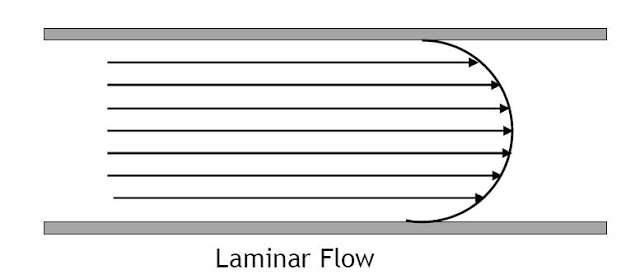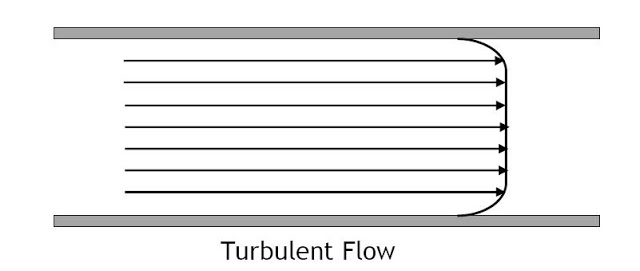Theory of Fluid Flow Meters(II)
Types of Flow
Laminar Flow
Laminar flow occurs when the average velocity is comparatively low. In laminar flow, the fluid moves smoothly in orderly layers, with little or no mixing of the fluid across the flow stream. Changes in velocity can still exist as the friction of the wall slows the layers closest to the wall, while the flow in the centre of the pipe moves at a faster pace. This velocity change produces a parabolic streamlined flow profile as shown below:

Turbulent Flow
Turbulent flow occurs when the flow velocity is high and the fluid particles no longer flow smoothly in layers. In this type of flow, the laminar flow breaks down to produce intermixing between the layers. Turbulent flow is quite random, as smaller currents flow (known as eddies) in all directions. This type of flow has a flatter flow profile, such that the velocity of forward flow in the centre of the pipe is nearly the same as that near the walls of the pipe as shown below:

Common Terms Used in Fluid Flow Measurement
Velocity
This is the speed at which a fluid moves through a pipe. The speed of particles in a fluid flow varies across the flow profile - where the fluid is in contact with the constraining walls (the boundary layer) the velocity of the liquid particles is virtually zero; in the center of the flow the liquid particles will have the maximum velocity. Thus, the average rate of flow is used in flow calculations.
Viscosity
Viscosity is a property of a gas or liquid that is a measure of its resistance to motion or flow.Simply put, it is the ease of flow of a fluid. Viscosity (dynamic) can be measured in poise or centipoise, whereas kinematic viscosity (without force) is measured in stokes or centistokes. Viscosity changes with the temperature of a fluid.
Density
Density is the weight per unit volume.
Reynolds’ Number
Reynolds’ number is a derived relationship combining the density and viscosity of a liquid with its velocity of flow and the cross-sectional dimensions. It defines the flow conditions at a particular point. It is a way of representing fluidity and is a useful indicator of laminar and turbulent flow. Mathematically, the Reynolds’ number is expressed as:
R=VDρ/u
Where:
V = Average velocity of fluid
D = Diameter of the pipe
ρ = Density of the fluid
u = Fluid viscosity
Laminar flow exists if the Reynolds number is less than 2000, and turbulence when the number is above 4000. There is not a clear transition between laminar and turbulent flows, which does complicate flow measurement in this range of operation.
- Pre: Flowmeters Working Theroy 2016/3/10
- Next:India Exhibition-2013 2013/8/9
